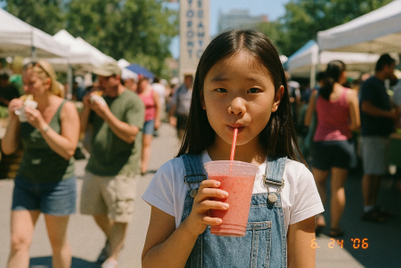
In February, adidas’ #SupportisEverything campaign, which shows 25 sets of bare breasts in different shapes, sparked global controversy. In promoting the brand’s new sports bra range (designed for 43 different body shapes), the campaign has become a critical milestone for releasing inclusive intimates to the international mainstream consumer.
In China, adidas has remained silent about its risqué campaign. The few Chinese-language news outlets to cover this ad controversy blurred the breast images as public nudity is still among the most taboo subjects in China’s internet censorship system.
However, the official media’s conservative rules should not hinder adidas’s message of inclusive underwear from going unheard in China. Over the past two years, a cohort of adaptive, inclusive underwear labels has grown in mainland China. Rising in tandem with the “comfort underwear” trend, the quick rise of inclusive intimate brands is more proof that young Chinese consumers have shifted toward body positivity and inclusivity while rejecting unrealistic beauty standards.
NaiTangPai, a plus-size bra brand founded in 2015, saw its annual sales surpass $15.8 million (100 million RMB) by 2020. Specializing in larger (C to K) cup size bras, the brand is a rare and necessary solution for China’s big-breasted women, who often get neglected by the mainstream underwear market, which predominantly features thin, size-S models. As 2014 Alibaba data reveals, 23 percent of the nearly 68 million Chinese bra shoppers on the platform purchased D-cup size and above. Yet, cute offerings for larger bust sizes were little or none.
Additionally, a deeply entrenched social stigma that tends to oversexualize the big breasts poses an extra PR challenge for brands like NaiTangPai. In the hopes of confronting the over-sexualization of big breasts and destigmatizing the plus-size body, NaiTangPai has been active in creating campaigns, such as its “I have a BIG trouble” film, to increase plus-size representation in the media.

Emily Yu, the founder of the eponymous adaptive underwear brand “Emily Yu,” used her design to bring to light a long-ignored consumer group — China’s post breast cancer patients. According to the 2021 Chinese national cancer data, over 400 thousand women in the country are diagnosed with breast cancer each year, of which 70 percent surveyed would eventually remove parts of their breasts.
“Post-mastectomy (a breast cancer surgery that removes the whole breast), most women in China put silicone breast implants in their bras as there are few adaptive-wear options around,” said Emily Yu during a Yixi speech (China’s version of TED Talks). “Wearing a fixed-size bra is very uncomfortable for them as their remaining breast keeps changing size from medications. So, I decided to make a line of adjustable, hyper-allergenic bras that can adapt to these patients’ body changes.”
Emily Yu isn’t the only one making adaptive wear feel seen and cool. A host of established and emerging brands are popping up with adaptive wear as their core CSR project. For example, Victoria’s Secret, in collaboration with designer Stella McCartney, launched the brand’s first line of mastectomy bras called The Body by Victoria last November. There is also Ubras, which started making post-mastectomy bras and donating them to breast cancer patients through its “Ubras Care” initiative. Additionally, the emerging Chinese brand Relief (如里) creates detachable period underwear — a handy solution for wheelchair users or anyone with limited mobility.

Before inclusive underwear, comfort dressing was already the predominant tone for China’s millennial and Gen-Z lingerie market. Even in pre-COVID times, unadorned, unpadded bralette and genderless underwear had taken over from the curve-enhancing sexy looks of the old Victoria’s Secret’s supermodel “angels” era. But in the past two years, the pandemic has continued to reshape consumer priorities, pushing forward the idea of personal comfort and self-acceptance. As a result, local underwear brands like Neiwai, Ubras, and Relief have been launching campaigns that show different body types and needs on-screen, tackling these body-related cultural stigmas one at a time.
International brand players should look up to these new-gen Chinese labels as a source of inspiration. With only a few local, emerging businesses testing the waters over recent years, China’s inclusive lingerie market remains a huge untapped opportunity.
But to win over consumers, brands need to make both technological and cultural breakthroughs. The growth of the Chinese consumer appetite for inclusive wear will have to happen alongside a cultural transformation that revalues beauty norms and shows a greater awareness of vulnerable societal groups through conscious shopping. Doing that will require brands to be bold with their inclusive messages yet tactful with their deliveries. And like adidas China, they must know precisely what can and cannot be shown.



.jpg&h=334&w=500&q=100&v=20250320&c=1)

.jpg&h=334&w=500&q=100&v=20250320&c=1)
.jpg&h=334&w=500&q=100&v=20250320&c=1)


.jpg&h=334&w=500&q=100&v=20250320&c=1)





.png&h=268&w=401&q=100&v=20250320&c=1)


.jpg&h=268&w=401&q=100&v=20250320&c=1)

